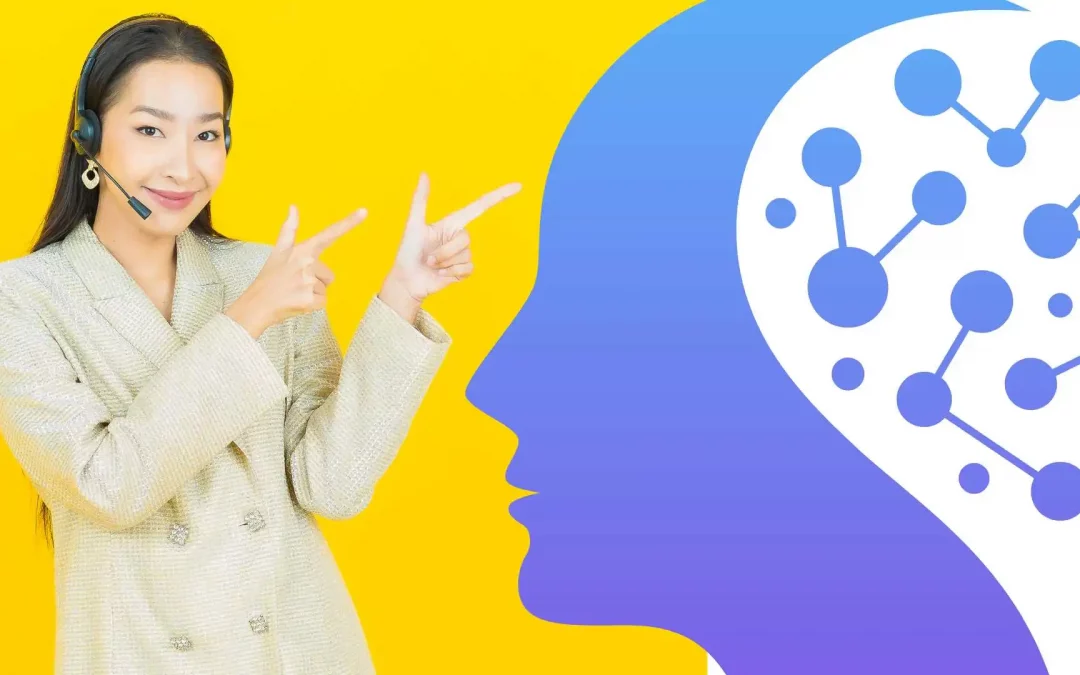The integration of Generative AI in Contact Center is changing customer care interactions.
Generative AI becomes a virtual colleague to support human activity, which remains, however, central to the task of supervising, adapting, controlling and orienting the technology.
The concept of “human centered AI” or “human in the loop” refers precisely to the need and desirability of human control that prevents the risk of “hallucinations”, i.e. the unexpected or not entirely accurate responses that a generative language model can produce.
Updated on June 16th 2025
Estimated reading time: 6 minutes
Table of contents
Human in the Loop

The role of human feedback, both from customers and within the customer service organization, is even more critical when AI operates independently.
Customer service automation roles, such as Chatbot Manager and Conversation Designer, will increasingly focus on monitoring interactions and improving the performance of chatbots and virtual assistants.
Humans will be responsible for identifying and correcting errors and improving performance over time, because even the best AI can still make mistakes.
The human role is to optimize LLMs for their intended use, in order to provide customers with accurate information and avoid brand reputation impacts.
As a result, rather than diminishing the role of customer service professionals, generative AI is set to amplify the importance of the “human touch.”
Use Case
Bringing Generative AI in Contact Centers, means to integrare generative artificial intelligence into multiple phases of the customer journey, radically transforming the operations and quality of the service offered. The most widespread applications include:
- Automatic generation of responses: AI is able to create contextual, coherent and personalized messages in real time, reducing waiting times and improving customer satisfaction.
- Support for human agents: During live interactions, AI systems suggest responses, useful documents and subsequent actions, speeding up the operational flow and reducing the cognitive load on operators.
- Post-call automation: Thanks to Natural Language Processing, AI can summarize conversations, automatically generate reports and update CRMs, increasing efficiency and accuracy.
- Sentiment analysis and psychometric profiling: The most advanced technologies analyze tone, language and keywords to detect the emotional state and personality traits of the customer, improving personalization and the communication approach.
These tools, combined with a Human-in-the-Loop approach, enable increased productivity, reduced operating costs, and more seamless and proactive customer experiences.
Super-Human Agents
A study conducted by Entrepreneur revealed that within the Contact Center, 83% of customers still prefer some degree of human involvement. While AI chatbots and virtual assistants help handle the simplest requests, complex problems still require the expertise and empathy of human agents.
Already in 2019, McKinsey studies referred to the figure of the “super-human agent”, that is: a hybrid professional profile that combines the human element with technological potential and works to the advantage of customer experience and organizational optimization.
The role of the call center agent is therefore already well beyond simply answering the telephone and managing emails. Within Generative AI Contact Centers, agents will be increasingly involved in problem solving and high-level collaboration to deliver more efficient and personalized customer experiences.
According to McKinsey, AI is already handling around 95% of customer requests in some highly advanced organizations; the remaining 5% of requests are the most complex and therefore require the attention of human agents.
In this way, contact centers improve their service in terms of faster response times and user experience.
Furthermore, artificial intelligence solutions allow you to anticipate customer needs and interact proactively through automated and personalized messages.
How to integrate Generative AI in Contact Centers

Integrating generative AI into a Contact Center requires a strategic approach that takes into account both technology and people. The first step is to identify the processes with the highest impact—such as chat support, email management, or voice conversation analysis—to introduce AI solutions capable of generating content, suggestions, or actions in real time. It is essential to adopt large linguistic models (LLM) through secure and governed platforms, capable of interfacing with existing business systems (CRM, ticketing, knowledge base).
Effective integration includes:
- Data readiness
Prepare structured and unstructured business data to train or connect AI to relevant information sources.
- Human-in-the-loop
Define a human oversight system, where agents can approve, correct or improve AI responses.
- Customized workflows
Design intelligent conversational flows, supported by dynamic prompts and advanced user segmentation.
- Continuous training
Update agents on new digital skills, such as the use of AI co-pilots or automatic post-call generation tools.
- Performance measurement
Monitor specific KPIs (such as AHT, FCR, CSAT) to evaluate the impact of generative AI on efficiency and customer experience.
Conclusions: The synergy between AI and the human factor
With Generative AI in contact centers, the role of agents is not diminished, but emotional intelligence and critical thinking skills allow them to dedicate themselves to managing the most complex issues.
In conclusion, as technology evolves, agents must be trained on new tools and software that will increasingly be an integral part of their work and acquire new skills, in terms of supervising conversational flows via chatbots and analyzing conversation and profiling data.
The goal is to generate greater value in a contact center where the synergy between AI and the human factor will really make the difference.
Faqs about Generative AI in Contact Centers
A Generative AI Contact Center is a customer service center that uses generative AI to automate responses, support human agents, and improve the user experience through personalized and contextual interactions.
Generative AI supports agents by suggesting real-time responses, summarizing conversations, automating post-interaction tasks, and providing customer insights, reducing operational burden and increasing efficiency.
No. Generative AI complements agents but does not replace them. Customers still prefer the human touch for complex situations. The ideal model is a “Human-in-the-Loop,” where AI and humans work together.
Yes. Modern AI solutions offer APIs and connectors that enable seamless integration with CRM (Salesforce, HubSpot, Dynamics) and ticketing platforms (Zendesk, Freshdesk, ServiceNow).
Updated on June 16th 2025

